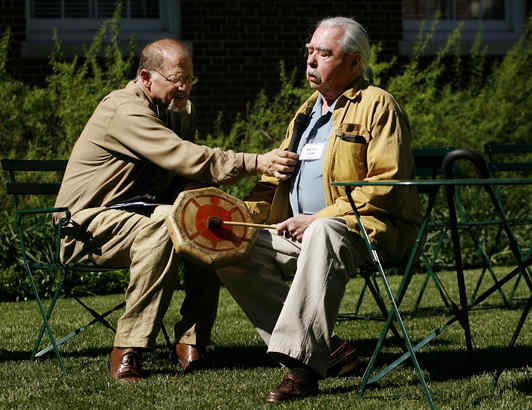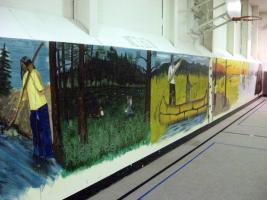Native voices bring Olympics homePlay-by-play commentary in aboriginal languages a labour of love, creativity
By Paul WatsonThere is no word for seconds in the Mohawk language, which makes it especially difficult to call the action in an Olympic ski race live for television.
Tiorahkwathe Gilbert was the first among his people to broadcast Olympic men's super-G in his native language Friday afternoon.
A rookie to sports commentary, he has spent months training for the landmark moment. He's had long discussions with elders in coffee shops and at kitchen tables to agree on the best way to express things the Mohawk haven't had much cause to say before.And:
For the first time in Canadian history, the Aboriginal Peoples Television Network is providing play-by-play commentary of live sports in Cree, Mohawk, Ojibway, Dene, Inuktitut, Michif and Oji-Cree.
Most of the First Nations, Métis and Inuit broadcasters calling the Winter Olympics action for APTN are rookies recruited from communities across the country and trained by veteran sportscaster Jim Van Horne.
Van Horne's dulcet voice is familiar to fans of hockey on TSN. He has also broadcast from the Calgary, Sydney and Beijing Olympics. During the Vancouver Games, he's working from APTN's Winnipeg studios, mentoring the aboriginal broadcasters he coached.Comment: As with singing
pop songs in Inuktitut, this may be the best way to preserve Native languages. Namely, by using them in everyday life. By employing them in the popular culture. By linking them to fun, engaging subjects such as music and the Olympics.
Below: "Tiorahkwathe Gilbert, a commentator with Aboriginal Peoples Television Network, broadcast the Olympic men's super-G event in Mohawk." (John Woods/The Canadian Press)














.jpg)









